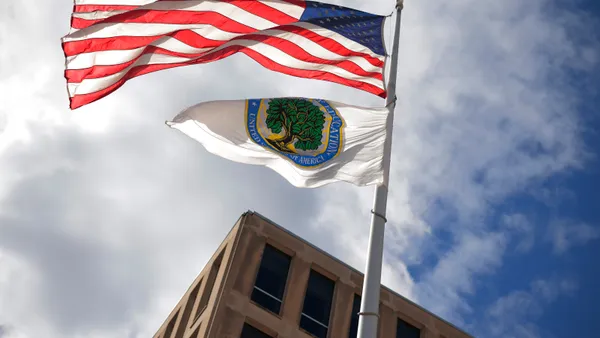Dive Brief:
-
Nearly 40% of the 10.6 million Medicaid disenrollments reported by states as of Nov. 14 have been children, according to Kaiser Family Foundation, which tracks state Medicaid data.
-
Data is limited, because only 21 states reported the ages of those who disenrolled. However, that still amounts to over 2 million children disenrolled out of 5.3 million total disenrollments in those 21 states.
-
Overall, and as predicted by researchers, many of those disenrollments (7 in 10) occurred because of procedural reasons, like states having outdated contact information for individuals or because people failed to complete renewal packets on time.
Dive Insight:
Pandemic-era policies, up until March 31, allowed Medicaid recipients’ coverage to automatically renew without determining whether or not they remain eligible.
Partly as a result of those automatic renewals, children’s enrollment increased during the time this policy was in place, according to Georgetown University Health Policy Institute’s Center for Children and Families.
However, starting in April, millions of children were expected to lose Medicaid or Children's Health Insurance Program coverage as those pandemic-era policies ended, during what is called the “unwinding” period.
An estimated 6.7 million children could ultimately become uninsured as a result, according to an estimate from Georgetown University Health Policy Institute. A federal report from 2022 suggested the majority of children predicted to lose coverage are still likely eligible.
“High procedural disenrollment rates are concerning because many people who are disenrolled for these paperwork reasons may still be eligible for Medicaid coverage,” said KFF in its mid-November update.
This has led some states to temporarily put a hold on procedural terminations “while they address problems” in the renewal process that are leading to high procedural disenrollments.
As students lose coverage, it's possible that districts also take a hit to their finances. Medicaid eligibility rates impact school-based Medicaid reimbursements and is a way districts confirm students qualify for free-and-reduced lunch in some states.
Medicaid is also the third- or fourth-largest federal revenue stream for school systems, according to the Medicaid in Schools Coalition.
Advocates have said that schools, which have access to families' contact and home address information, are in a unique position to help students renew their coverage.
Letters, robocalls, text messages, social media and other communications can all help educators reach out to make students and parents aware of the change in public health policy that may render them ineligible due to a lack of proper paperwork.













